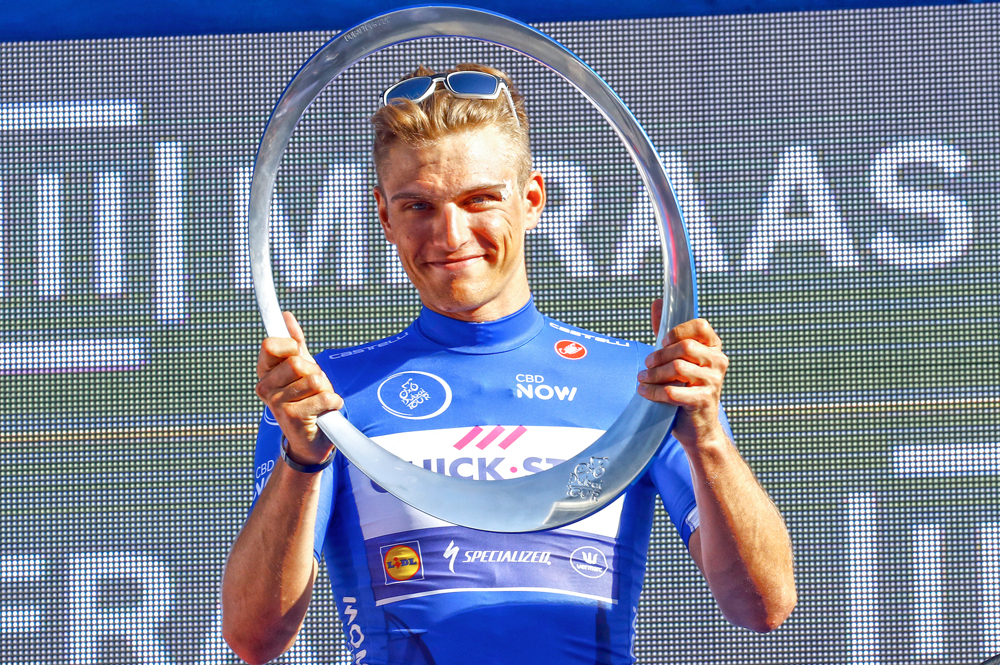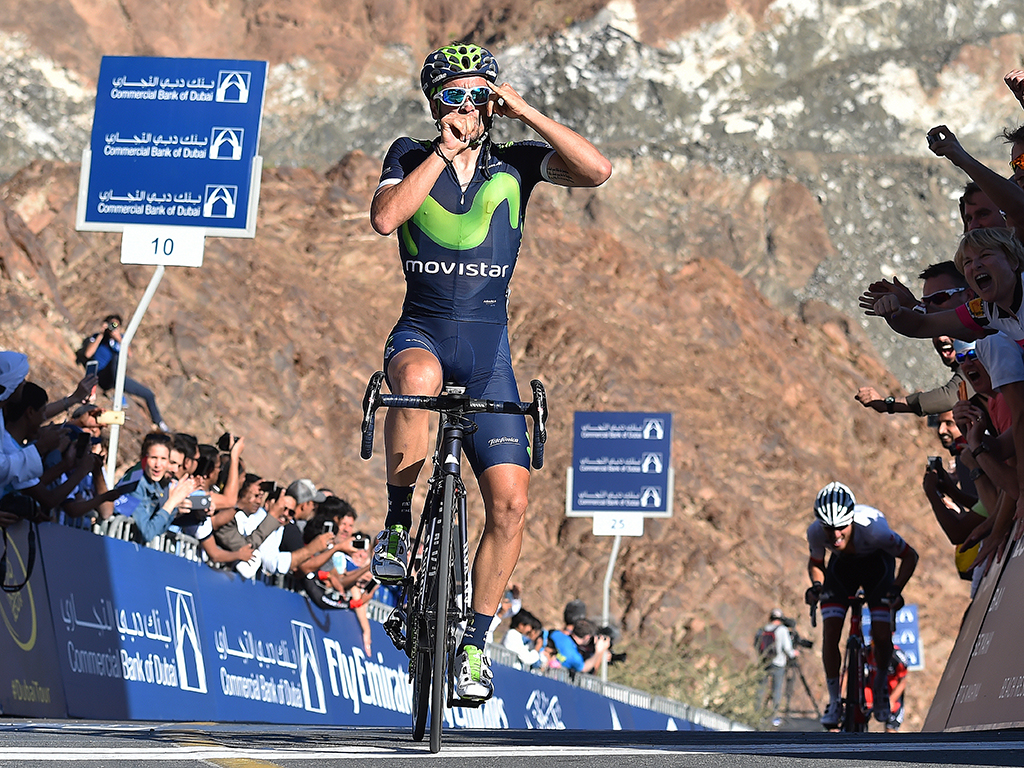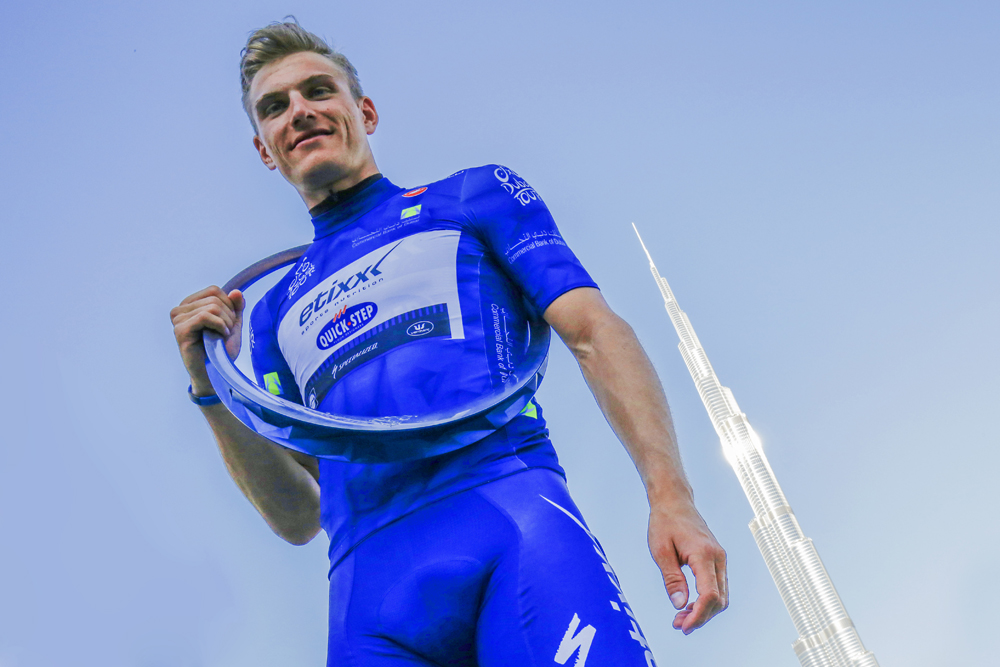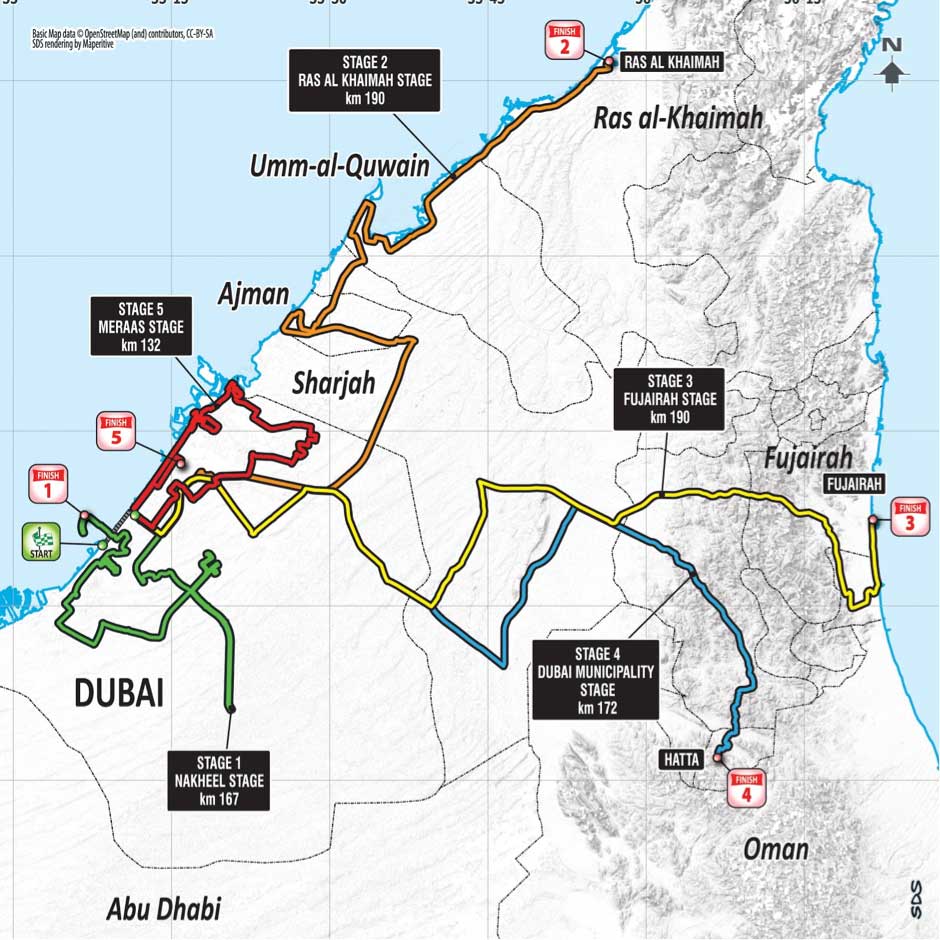2018 Dubai Tour with familiar format and new date
Route presented in Dubai




The Dubai Tour will return for its fifth edition in 2018 with a familiar, sprint-friendly format and a slightly later position on the calendar. The UCI 2.HC event will take place from February 6-10 – a week later than normal as it moves into the slot vacated by the Tour of Qatar – and will feature five stages, including the short but sharp uphill finish at Hatta Dam.
The route of the 2018 Dubai Tour was presented at City Walk in Dubai on Monday evening, and although the start list will not be confirmed until the new year, one can expect the usual litany of top sprinters in the early-season event, which has been claimed by Marcel Kittel in each of the past two seasons.
"In just four editions the Dubai Tour increased in all the aspects. We added a race day, we visited the surrounding Emirates, we increased the stages' length and we can see the results on our roll of honour: names like Taylor Phinney, Mark Cavendish and Marcel Kittel certify our results, at least in sporting terms," said H.E. Saeed Hareb, general secretary of the Dubai Sports Council.
The Dubai Tour is one of two events in the Gulf run in association with Giro d'Italia organiser RCS Sport, with the Abu Dhabi Tour slated for February 21-15. Last year's Dubai Tour route was the first to feature five stages, though only four stages eventually took place, with the penultimate leg to Hatta Dam cancelled due to high winds. The same stage route is included in the 2018 Dubai Tour and is again slated for the penultimate day.
The 2018 Dubai Tour gets underway with a 167km stage designed to showcase Dubai's signature construction projects, as well as the site of the 2020 Dubai Expo and the Al Qudra bike path. The stage finishes on the artificial archipelago of Palm Jumeirah.
Stage 2 brings the peloton away from Dubai and through four neighbouring emirates – Sharjah, Ajman, Umm al-Quwain and Ras Al Khaimah. The 190km route hugs the coastline in the second half of the stage, and the sprinters will expect another opportunity on Al Quawasim Corniche Road.
Another 190km leg follows on stage 3, as the race travels from Dubai to the emirate of Fujairah, perched on the Indian Ocean coast.
Get The Leadout Newsletter
The latest race content, interviews, features, reviews and expert buying guides, direct to your inbox!
Stage 4 – wind conditions allowing, of course – provides the puncheurs with a rare opportunity to upset the pure sprinters on the steep ramps of Hatta Dam. That kick to the line is not the only obstacle on the 172km route, as the road pitches up towards 11% on two short climbs in the finale. The final 200 metres before the finish, however, are where the difference will be made, and sprinters with designs on overall victory will need to hang tough as the gradient briefly touches 17%.
The final stage is a rather more straightforward affair, taking place entirely within the city of Dubai. The 132km leg brings the race along the Dubai waterfront before the grandstand finale at City Walk.
WorldTour and Giro
The scope of the race has grown incrementally from the inaugural edition in 2013, which was centred around the city of Dubai itself, and in 2018, the race will incorporate six of the seven constituent emirates of the United Arab Emirates.
"When we started the race, our thinking was very limited, but then we realised that with live TV, we can show new areas that people have never seen before," Saeed Hareb said after the hour-long presentation had come to an end on Monday evening. "For example, everybody knew the name of Hatta, but when we brought the race there, people could actually see it. For us, the race has both a competition side and a tourism side. With the Expo coming [in 2020 – ed.], for instance, we are able to show that it is under construction."
With the Tour of Qatar no longer on the calendar, the Dubai Tour seems likely to attract Classics riders in greater number than before. The 851km event may be some distance – literally and figuratively – from the flatlands of Flanders, but it takes in the kind of exposed, wind-buffeted terrain that makes for ideal warm weather for the cobbled tests to come in March and April.
At its heart, of course, the Dubai Tour remains a race for the fast men, and they will not want for opportunities in an event that takes in six of the seven United Arab Emirates. The block of early-season Gulf racing continues with ASO's Tour of Oman (February 13-18) and the Abu Dhabi Tour.
The Abu Dhabi Tour is already installed on the WorldTour calendar, and the Dubai Tour has plans to become the second UAE event in cycling's top flight. In the longer term, the prospect of bringing the start of the Giro d'Italia to Dubai has attracted local interest, and the planned 2018 partenza from Israel will be observed closely.
"Why not? We've talked about it," Hareb said. "We're not ready 100 per cent but we are planning for it, to start the Giro from here."

Barry Ryan was Head of Features at Cyclingnews. He has covered professional cycling since 2010, reporting from the Tour de France, Giro d’Italia and events from Argentina to Japan. His writing has appeared in The Independent, Procycling and Cycling Plus. He is the author of The Ascent: Sean Kelly, Stephen Roche and the Rise of Irish Cycling’s Golden Generation, published by Gill Books.